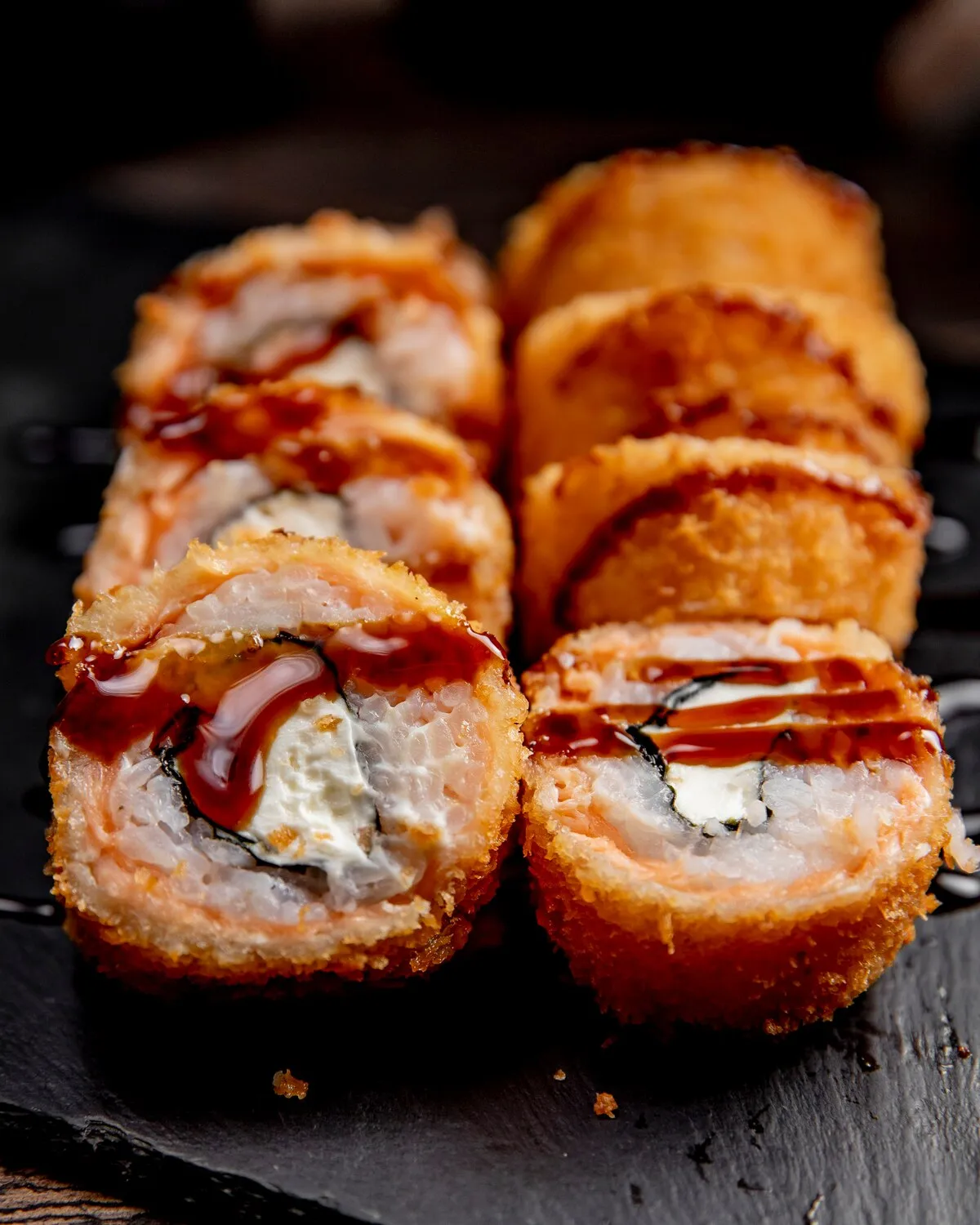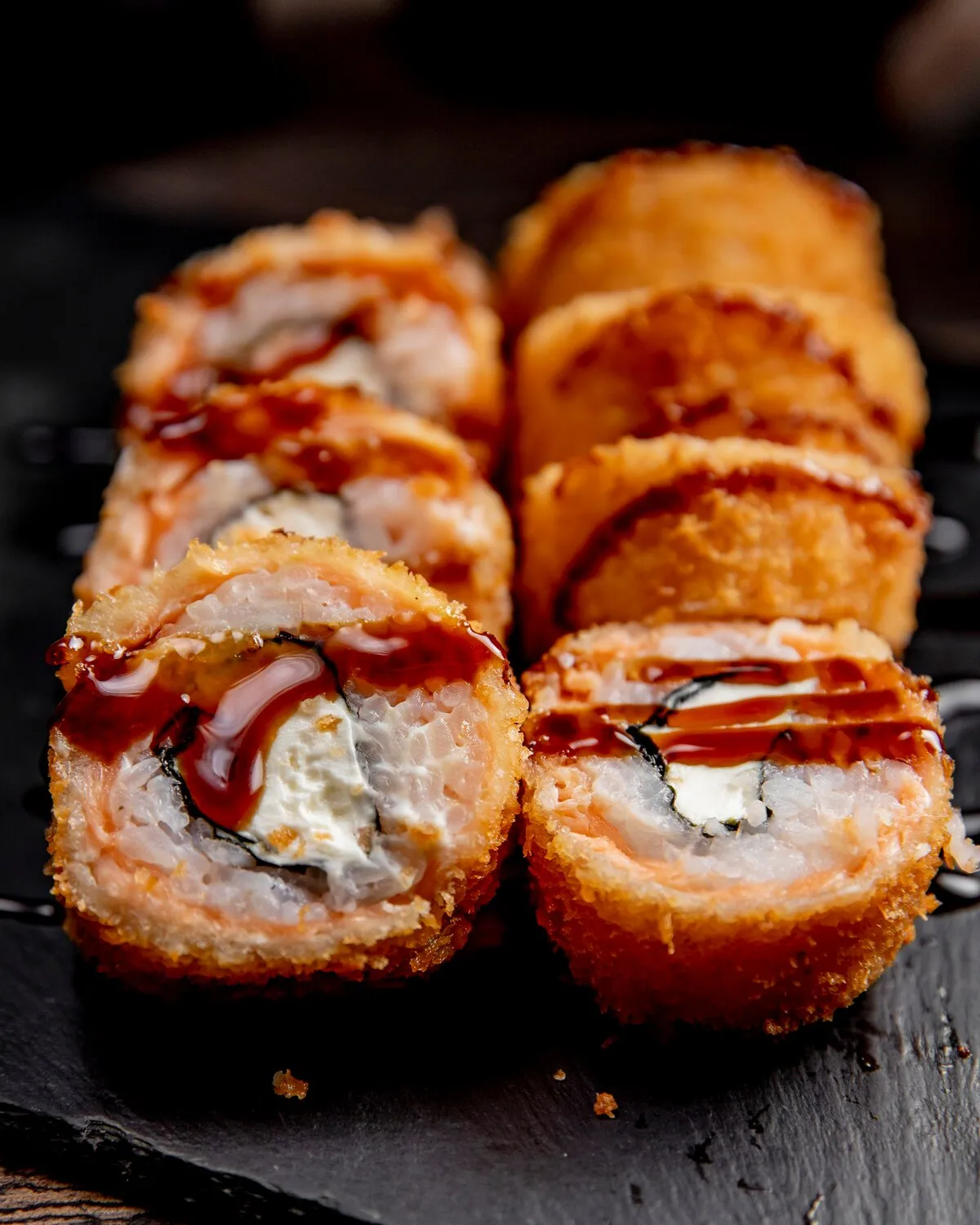
Hot Rolls
Sushi rolls that are tempura-fried, offering a warm and crispy experience.
Nutrition Facts
* The % Daily Value (DV) tells you how much a nutrient in a serving of food contributes to a daily diet. 2,000 calories a day is used for general nutrition advice.
Hot Rolls, also known as Tempura Sushi Rolls, are a relatively recent innovation in sushi, emerging from American adaptations of Japanese cuisine. The concept combines the traditional art of sushi-making with the American palate's preference for fried foods. It reflects a fusion of culinary techniques, blending Japanese sushi with tempura batter and frying methods, ultimately originating from Japanese immigrants in America adapting to local preferences.
Hot Rolls are primarily a Westernized phenomenon, showcasing the adaptation and evolution of traditional sushi in a more accessible format for a wider audience. They represent a casual and often indulgent interpretation of sushi.
Americanized Sushi
Hot Rolls are a prime example of how traditional sushi has been adapted to suit American tastes, often deviating significantly from authentic Japanese preparations.
Casual Dining
They are frequently found on the menus of casual dining restaurants and sushi bars, offering a more approachable and less intimidating entry point to sushi for newcomers.
Fusion Cuisine
Hot Rolls represent a successful fusion of Japanese and American culinary techniques and preferences, demonstrating the ongoing evolution of food culture.
Hot Rolls deliver a delightful combination of flavors and textures, blending the freshness of sushi with the satisfying crunch of tempura.
The dominant flavor profile is a balance of umami from the nori seaweed and sushi rice, combined with the chosen fillings, which can range from salmon and tuna to avocado and cream cheese. The tempura coating adds a savory, oily richness and a crispy texture that contrasts nicely with the soft sushi inside. Dipping sauces like spicy mayo, eel sauce, or soy sauce further enhance the flavor profile, providing sweetness, spiciness, or saltiness.
Rice Preparation
Use high-quality sushi rice and season it correctly with rice vinegar, sugar, and salt. The rice should be sticky enough to hold its shape but not overly mushy.
Tempura Batter Consistency
Prepare a light and airy tempura batter using cold ingredients. Avoid overmixing the batter, as this will result in a dense and heavy coating. Club soda is often added to the batter for extra lightness.
Frying Temperature
Maintain a consistent oil temperature of around 350-375°F (175-190°C) for optimal frying. Frying at too low a temperature will result in greasy rolls, while too high a temperature can burn the outside before the inside is heated through.
Prevent Soggy Rolls
Make sure the rolls are very cold before frying to prevent them from falling apart. Also, immediately after frying place on a wire rack so the bottom of the rolls will stay crispy.
Explore additional Japanese Fusion dishes and restaurants
Explore Japanese FusionDiscover top dining spots and culinary experiences in Chapecó.
Explore ChapecóLearn more about the food culture, restaurant scene, and culinary heritage of Brazil.
Explore Brazil
